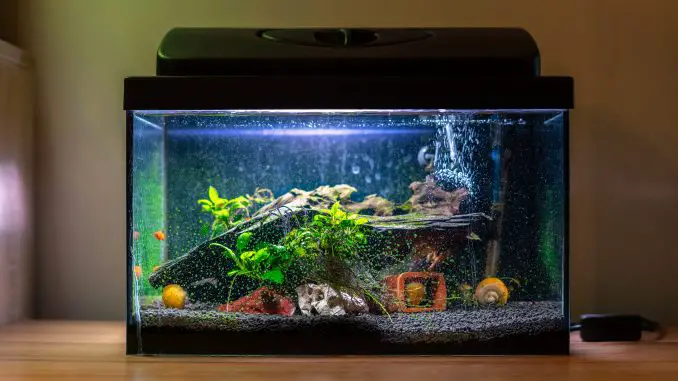
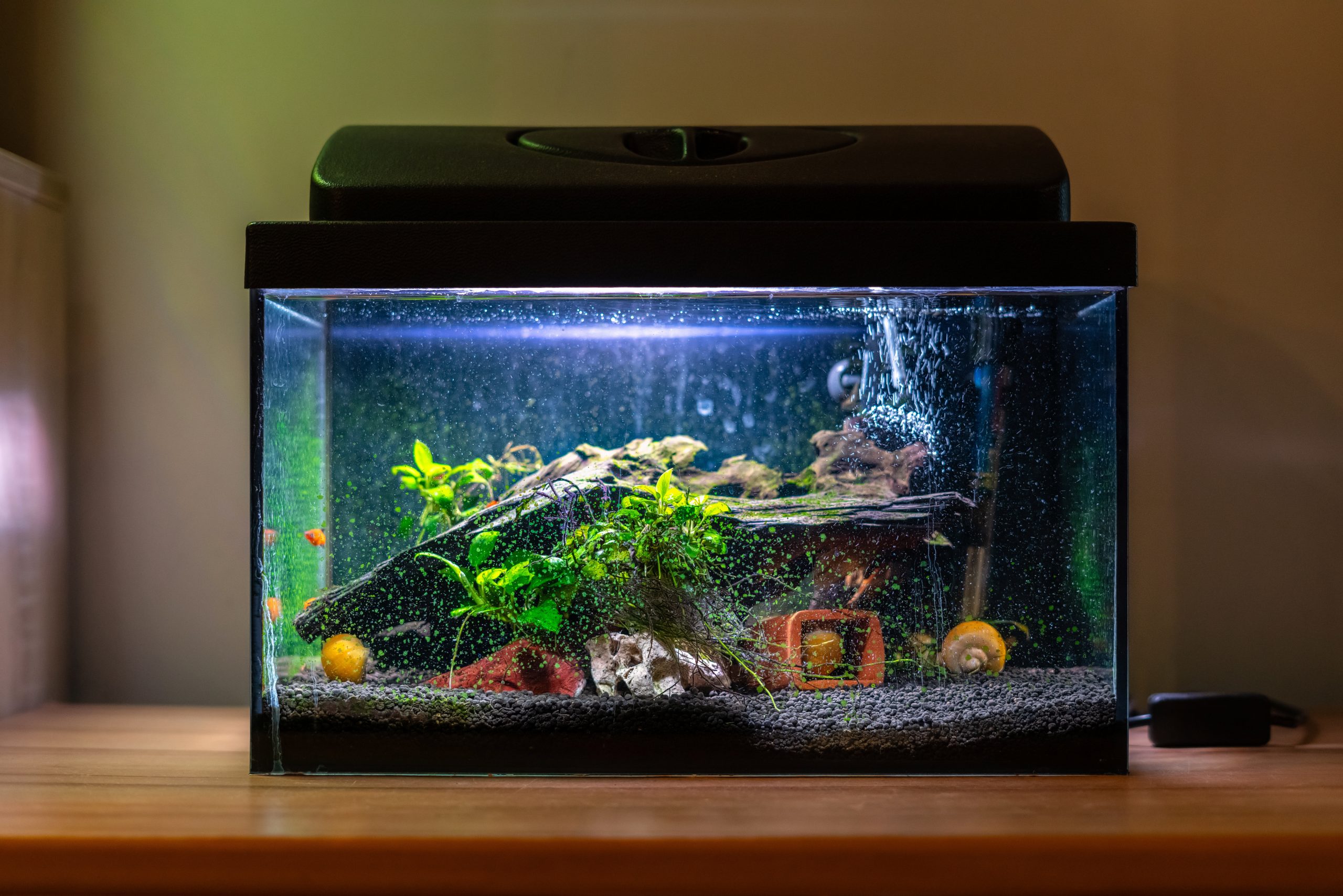
If you choose to put together a planted aquarium, that is one with aquatic plants and fish, it is quite a visually attractive display. The use of real plants, not plastic ones, in an aquarium, can help to balance the chemistry of the tank and provide a more stable environment for its inhabitants.
Finding that balance point between all the chemical factors that develop in your aquarium water can be quite challenging. Although an aquarium is a sort of closed system, in reality, it is not a true ecosystem and requires periodic, exogenous inputs to keep things stable.
If you have live aquatic plants, you must occasionally add a liquid fertilizer to provide proper nutrients and help them grow. Too much fertilizer, however, can poison your fish and drive the emergence of algal blooms, which will kill some types of aquarium organisms (i.e., corals), compete for oxygen, and dramatically lower the oxygen tension in the tank.
Balancing osmotic pressures in freshwater tanks is only a matter of keeping the tank clean and ensuring that the pH and certain minerals are under control and within normal parameters. In contrast, saltwater tank environments require much more attention to these details as the solute-rich water must be osmotically balanced against the intracellular and interstitial water in your fish, shellfish, anemones, and corals to prevent death.
Here, we will review the ins and outs of good water chemistry in your aquarium, how to monitor the chemical condition of the tank water, and what methods to use to restore your tank to good health if conditions fall out of normal parameters.
How do you effectively titrate nitrates OVERTIME and keep water chemistry good for fish AND plants?
Nitrate management over the long haul is a matter of basic good tank maintenance. There are several things you should do on a regular basis that, in most cases, will effectively control nitrate levels in the tank water without the need for external chemical interventions.
Below are some simple steps you can take to get nitrate levels under control and create a healthy and stable environment for your fish, shellfish, corals, and plants.
Feed Fish Less and Clean Up After Them
If you find leftover food in the tank after feeding your fish (which you should do with small feedings two to three times each day), scoop up and remove the uneaten food with your cleaning net after feeding. Leaving food in the tank can increase the nitrate levels in the tank water and breeds bacteria and algae.
Remove Detritus from the Tank
Remove any dead invertebrates, dead fish, or dead or dying plant parts from the tank each day.
Change the Tank Water
Each week, change 10-50% of the tank water (replace with dechlorinated tap water) and check your filters for cleanliness. In saltwater tanks, water changes are more of a burden, so replace about 10-15% of the tank water each week with clean, dechlorinated water.
Get a Reverse Osmosis System
If you find that your source water contains a lot of nitrates, nitrites, and phosphates, these likely have entered into the water supply from agricultural runoff. Starting with too much of these chemicals requires you to invest in a reverse osmosis system, which will take care of the problem for you by purifying the water before it enters the tank.
Live Rock and Sand Beds (Saltwater Tanks)
Many diehard saltwater aquarium enthusiasts swear by using live rock, live stone, or deep marine sand beds to introduce microscopic marine organisms (bacteria, algae, invertebrates) to the tank that contributes to the nitrogen cycle by nitrification of waste products. They are also quite adept at helping to stabilize tank water chemistry.
More Live Plants and Lots of Them
If you find that your tank environment tends to produce too much nitrate, nitrite, and phosphate, invest in a few more live plants. These chemicals are plant growth nutrients and the plants will readily remove them from the tank water to reduce levels.
Less Fish or a Bigger Tank Volume
Apart from introducing more plant life to balance tank water chemistry, if you continue to have problems you may simply have too much animal biomass in the tank. Either remove some fish from the tank or switch over to a larger tank volume.
Too many fish or a few large fish can produce quite a lot of waste, which can overwhelm the capacity of the live plants in the tank system to convert and consume the byproducts.
When All Else Fails, Use a Nitrate Titration Kit
Short of finding that perfect balance, there are times when a direct chemical intervention is required. Nitrate titration kits are available at almost every aquarium shop and can be used to artificially reduce the nitrate levels in the tank water.
These kits, however, are a temporary solution to be used under emergency conditions. Ideally, you should seek out the stable, long-term solutions mentioned above to managing tank water chemistry.
How Do I Know When to Add Minerals?
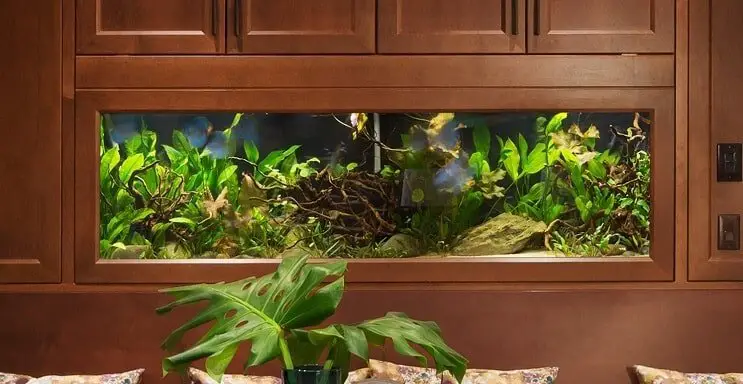
Water hardness relates to the dissolved calcium and magnesium content of the water. If these dissolved solute concentrations are too high, this can lead to mineral deposits in the tank, difficulties in maintaining water pH, and promote algal blooms which can poison and/or compete with your tank animal life for oxygen. Sometimes, however, the issue is the opposite and the water is too soft.
If the water is too soft, which is typified by low pH (<6.5), add sources of calcium. This can be in the form of decorations that contain calcium (coral sand, tufa rock, ocean rock, seashells).
Powered minerals can also be purchased at aquarium stores and are premixed to achieve certain water pH levels, based on the mixture. Establishing proper water hardness is important to achieve before attempts to adjust the tank pH.
How to Manage Water Maintenance
To maintain the proper environment in your aquarium tank, there are several things you should do on a daily, weekly, and monthly basis.
Daily: check the water temperature.
Weekly: Replace 10% of the tank water with clean, dechlorinated water. To dechlorinate, simply put tap water into a large container such as a bucket and leave it in the sunlight.
After about one to two days, most of the chlorine will have evaporated from the container. Test the water pH, ammonia, nitrate, nitrite, water hardness, and chlorine levels.
This can be done using many commercially-available comprehensive test kits that can be purchased at your local aquarium shop or bought online. Kits typically will test for pH (including a high range pH test), ammonia, nitrate, and nitrite.
The pH range for most tanks is between 6.5 and 8.2, however, you should adjust the pH with a kit to the needs of the fish and shellfish species you have selected for the tank. Separate kits can be purchased to conduct tests for water hardness and chlorine levels.
Remove any algae from the tank weekly.
Monthly: Vacuum aquarium gravel of debris, replace 25-50% of the tank water with clean, dechlorinated water, remove excess algae, inspect the filters (clean the cartridge, carbon, and prefilters or replace them if needed), remove plastic decorations and clean them, replace the air stone, and prune any live plants in the tank.
Cartridges can be cleaned very simply by removing the filter and prefilter cartridges and cleaning them by hand in the tank water that you have removed. This will keep the chemical balance in the filters stable.
Brush away any accumulated film or debris in the filter and return it to the cartridge holder. As far as cleaning the activated carbon in the filter system, remove the filter box and place it in a sink or plastic tub of water.
Remove any loose charcoal, place the remaining carbon in a sieve or mesh strainer, and rinse with warm water until no more debris appears in the rinsate. Now perform a by-ear test and listen to the charcoal.
If you hear a faint popping or crackling sound, that is a good indication that the charcoal is still active and will continue to bind materials passing through the filter. If not, replace the charcoal with a fresh batch.
How to Monitor the Amount of Liquid Fertilizer in Your Fish Tank
A planted aquarium tank is sort of an artificial ecosystem, where the plants help to balance the nitrate, nitrite, and phosphate levels produced from fish waste in the tank by consuming them as growth nutrients. Finding that balance point between the right numbers of plants to fish can be a bit tricky. So occasionally you may need to supplement the nitrogen and phosphorus for plants in the tank by sparingly adding liquid fertilizer.
By sparingly, we mean that a little will go a long way, so be sure to follow the directions on the container and only add the amount recommended for your tank volume. More is not better.
Use micro fertilizers with iron (an important plant micronutrient) as well as a macro fertilizer with NPK (nitrogen, phosphorus, potassium). Typically, your treatment will consist of a mix of the two fertilizer products. Best parameters for plants are as follows: nitrate (10-25 mg/l), potassium (5-10 mg/l), phosphate (0.1-1.0 mg/l), iron (0.05-0.1 mg/l), magnesium (<10 mg/l).
Test kits for nitrates and phosphates should be used to verify that the amount of fertilizer you add is within the specifications for your size tank.
There are several useful calculators are available on the internet (here’s a nice one: https://www.flowgrow.de/db/calculator/basic?language=en_GB) that can assist you in your monitoring efforts.
Nitrogen deficiencies will become obvious to you if you just have a good look at your plants. Deficiencies lead to leaf yellowing and the emergence of filamentous algae in the tank. Your plants may need phosphate if you see blooms of green spot algae and notice that the plant leaves are darkening or shoots appear to not be growing.
As an assistive system to aid plant health, sizeable aquarium tanks that are planted tanks should have some form of carbon dioxide injector system. These systems are available at better aquarium stores and run the gamut of the price range from affordable bio-based carbon dioxide systems to more expensive ones that use pressurized canisters of carbon dioxide.
If you use a carbon dioxide injector system, you should also perform dissolved carbon dioxide tests on a weekly basis. Drop checkers are an easy monitoring solution and consist of inverted blown glass flasks that you mount inside the tank wall.
Simply follow the directions of the test, wait for the indicator solution to react, and read the color change to determine the carbon dioxide level of your tank.
How Light Affects the Water Chemistry of Planted Tank
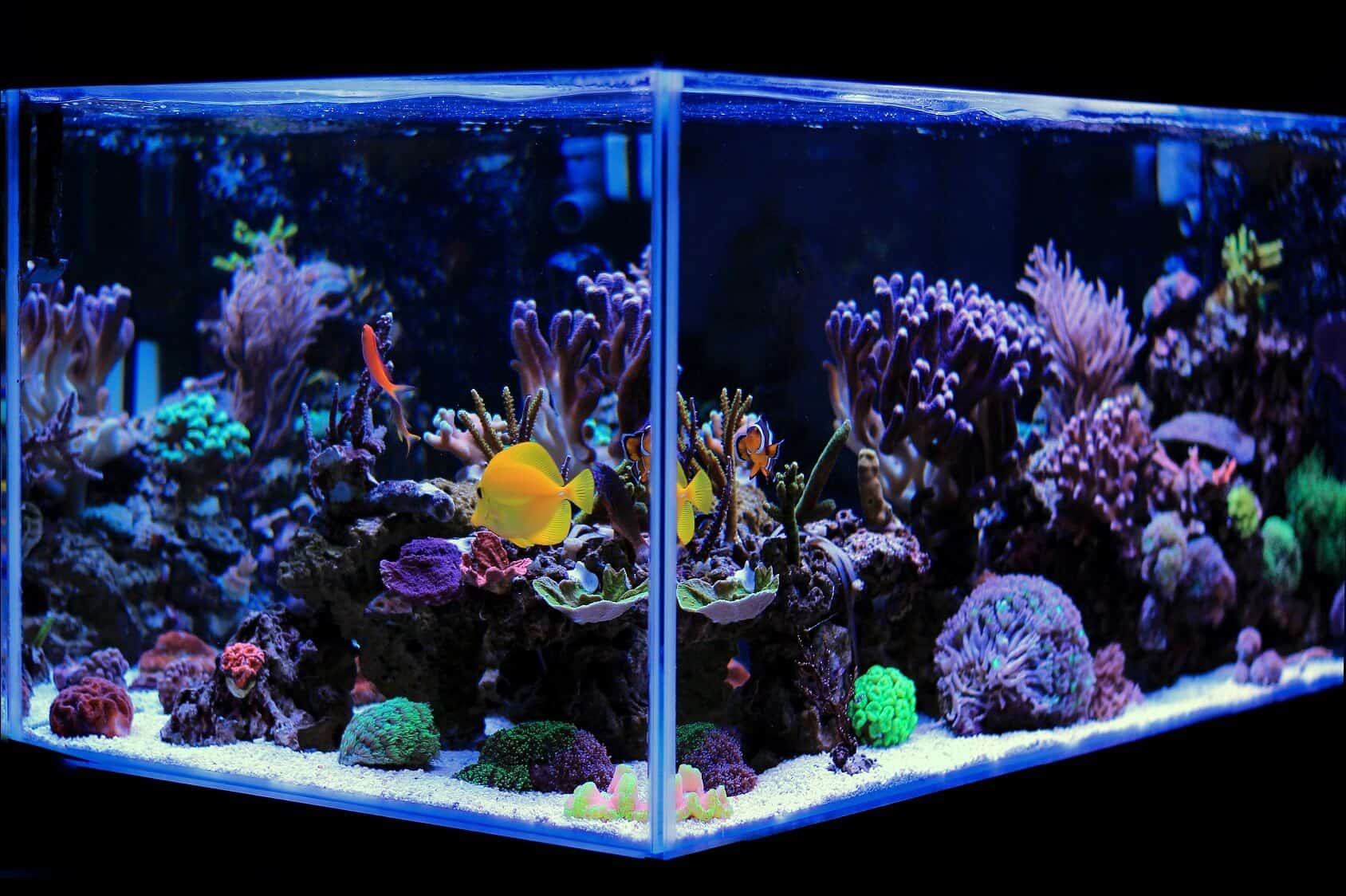
Since you may not see the connection between light levels of your tank and water chemistry, remember that that plants need light and your planted tank needs more than just fertilizers. Be sure to keep the tank well-lit for healthy plants.
If you are seeking to achieve that nice balance between plant biomass and fish, putting all the plants in the world in your tank but starving them for light will not allow you to reach this goal. Different aquatic plants have different light intensity requirements, so make sure you know what species you are putting in the tank and what light levels are best for their growth.
If you are going with plastic plants only, this topic is a moot issue. However, if you choose to use live plants, most plant nurseries with aquatic plants categorize them using a simple system of color-coding: green, yellow, and red.
Green category plants require low light conditions for growth, typically 0.2-0.3 Watts/liter for grow bulbs and 15-25 lumens/liter for LED lamps. Yellow category plants are intermediate and require 0.4-0.6 Watts/liter for grow bulbs and 30-45 lumens/liter with LEDs.
Red category plants require high levels of light beginning at 0.7 Watts/liter for growing bulbs or 50 lumens/liter for LED lamps. There are several online light calculators that can help you in your decision-making (here is a good one (part of the site is in German, so you may have to translate):
https://www.flowgrow.de/db/lightcalculator/intensity?language=en_GB.

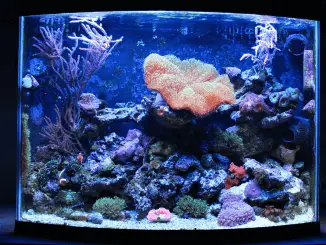
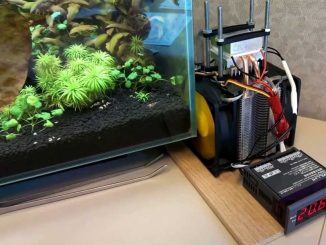
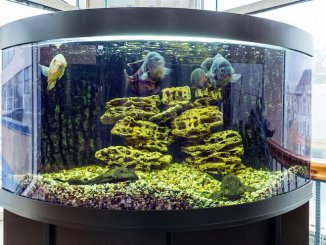
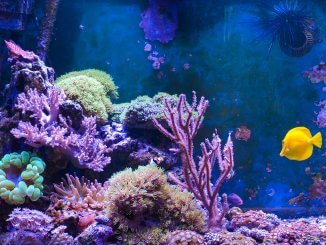

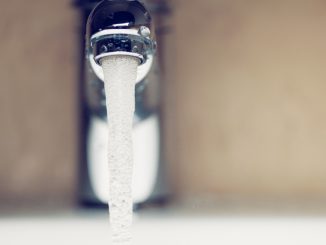
The main water chemistry problem I have been dealing with is decreasing the pH. After adding some zebra danios (relatively new aquarium), someone suggested monitoring the pH, which I did. I work at a small college, so we have lab equipment to use. pH has been 8.1 to 8.2, so a bit too high. Carolina Biological aquarium guide suggested adding a small amount of peat moss wrapped in cloth to gradually lower pH. I used sphagnum moss (related to peat) in a small volume outside the aquarium which did work, but had little effect inside the aquarium. I have since started to adjust pH of fresh tap water to close to 7 (after adding Stress Coat) before swapping out some tank water with this lower pH water 2 L per daily change.